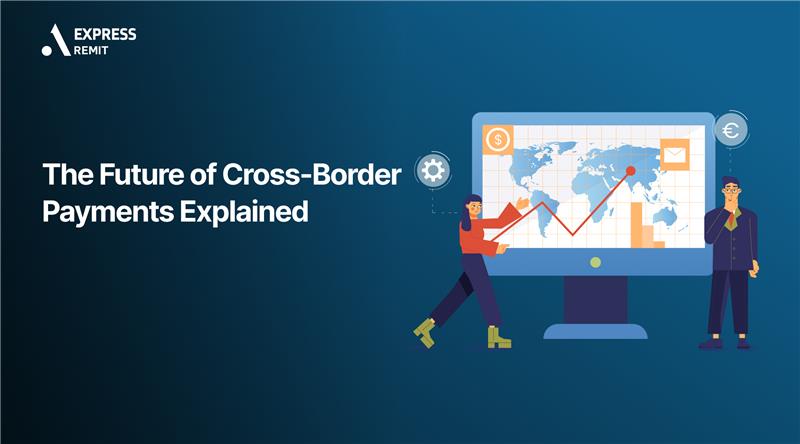
In today’s globalized economy, cross-border payments play a crucial role in facilitating international trade and personal transactions. As technology evolves, the future of cross-border payments is set to transform significantly. Businesses and individuals alike are seeking faster, more cost-effective solutions for transferring money across borders.
In this article, we will delve into the advancements shaping the future of cross-border payments, the role of multicurrency accounts, and how money transfer processes are evolving to meet global demands.
The Future of Cross-Border Payments Explained: Key Trends
The future of cross-border payments is marked by several innovative trends that aim to address the challenges associated with international money transfers. With the growing demand for efficiency and transparency, financial institutions and fintech companies are leveraging cutting-edge technologies to improve cross-border payment systems.
1. Blockchain and Digital Currencies
Blockchain technology and digital currencies are poised to revolutionize the way cross-border payments are processed. Blockchain offers a decentralized and secure platform that can significantly reduce transaction times and costs. Cryptocurrencies, such as Bitcoin and stablecoins, provide an alternative to traditional payment methods, enabling faster and more affordable international transfers.
2. Real-Time Payment Systems
Real-time payment (RTP) systems are another pivotal innovation driving the future of cross-border payments. These systems allow for the instant transfer of funds between countries, eliminating the delays associated with conventional banking processes. Countries are increasingly adopting RTP networks, making cross-border money transfers faster and more accessible.
3. Multicurrency Accounts for Seamless Transactions
A significant development in the future of cross-border payments is the rise of multicurrency accounts. These accounts allow users to hold, send, and receive multiple currencies within a single platform. Multicurrency accounts reduce the need for currency conversion, which minimizes fees and enhances the efficiency of international transactions. Businesses operating globally benefit greatly from these accounts by streamlining their payment processes.
4. Enhanced Regulatory Frameworks
As cross-border payment volumes increase, regulatory bodies are strengthening frameworks to ensure secure and transparent transactions. New regulations focus on anti-money laundering (AML) compliance, data protection, and consumer rights. These measures aim to foster trust and mitigate risks in the cross-border payment ecosystem.
How Multicurrency Accounts Are Shaping the Future
Multicurrency accounts are transforming the way businesses and individuals manage cross-border payments. By facilitating the holding and exchanging of different currencies, these accounts offer several advantages:
- Reduced Currency Conversion Costs: Avoiding multiple conversions lowers transaction expenses.
- Improved Cash Flow Management: Businesses can manage payments in various currencies without delays.
- Simplified Global Operations: A single platform for multiple currencies enhances operational efficiency.
Financial service providers are increasingly offering multicurrency accounts as part of their cross-border payment solutions. This innovation empowers users to conduct transactions in local currencies, improving cost efficiency and reducing exchange rate risks.
The Role of Fintech in Cross-Border Money Transfers
Fintech companies are at the forefront of driving innovations in cross-border payments. Through advanced technology and customer-centric solutions, fintech firms are addressing the pain points of traditional money transfer methods.
Key Contributions of Fintech to Cross-Border Payments:
- Lower Transaction Fees: Fintech platforms typically offer lower fees than traditional banks.
- Faster Processing Times: Digital solutions enable near-instant cross-border money transfers.
- Enhanced User Experience: User-friendly platforms and mobile applications simplify the payment process.
- Access to Multicurrency Accounts: Many fintech services provide multicurrency accounts for seamless international transactions.
As fintech continues to grow, the future of cross-border payments will become more accessible, affordable, and transparent for consumers and businesses worldwide.
What Is the Cheapest Way to Send Internationally?
A common question when discussing the future of cross-border payments is: What is the cheapest way to send internationally?
The most cost-effective method depends on various factors, including the destination country, transfer amount, and currency involved. Here are some of the most affordable options for international money transfers:
- Fintech Platforms: Services like Wise and Revolut offer competitive exchange rates and low fees.
- Cryptocurrency Transfers: Using blockchain-based solutions can lower fees, though it may involve volatility risks.
- Peer-to-Peer (P2P) Payment Systems: Platforms like PayPal and Venmo offer convenient international transfer options.
- Multicurrency Accounts: These accounts provide an efficient way to manage and transfer money in different currencies without multiple conversions.
Comparing fees, exchange rates, and transfer times across various providers can help you find the most affordable solution for your international money transfer needs.
The Future of Cross-Border Payments Explained: Final Thoughts
The future of cross-border payments is evolving rapidly due to technological advancements and increasing global connectivity. Innovations such as blockchain, real-time payment systems, and multicurrency accounts are transforming how money is transferred internationally. As fintech continues to innovate, cross-border payments will become faster, more affordable, and more transparent.
For individuals and businesses engaged in international transactions, staying informed about these changes is crucial. Embracing new payment solutions and understanding the benefits of multicurrency accounts can lead to more efficient and cost-effective cross-border money transfers. As the industry evolves, the future of cross-border payments promises greater accessibility and convenience for users worldwide.
